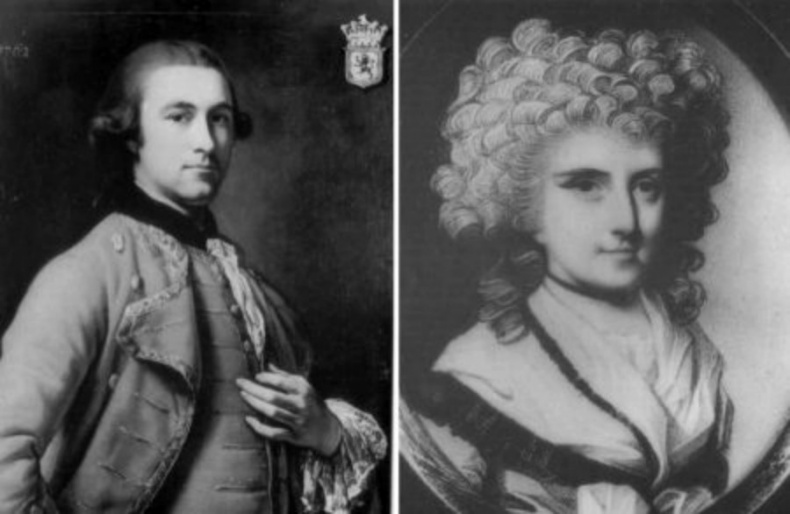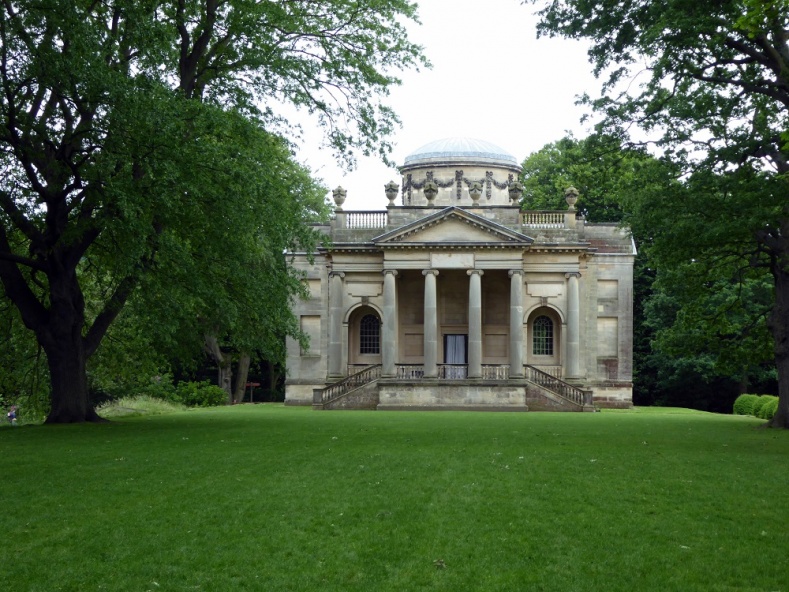

Bowes, Sir George and Mary Eleanor
1701-1760 and 1749-1800
Landowner and Politician
George Bowes was born in 1701 at Streatlam Castle and educated at Mr Hill’s School, London. He was the third son of Sir William Bowes (1657-1707) and Elizabeth Blakiston (1651-1736), heiress to the Blakiston estate. As the third son George wasn’t expected to inherit his father’s estate or title. Instead, he entered the Army with a captain’s commission to serve in General Wade’s cavalry.
Both of his older brothers, William (1696-1721) and Thomas (1663-1722) died within a year of each other. George, therefore, inherited both the Bowes and Blakiston’s estates in 1722, which included Gibside, and the mineral rights beneath large tracts of land in Durham. He immediately left the Army to return north to manage his estates with the goal of being elected as MP. After an unsuccessful parliamentary election in Berwick, he was elected as MP for Durham.
Bowes established with other northern coal owners and politicians the ‘Grand Alliance’. This was a 99-year agreement with the goal of protecting, expanding and regulating the coal industry. The agreement helped finance infrastructure projects, but it also generated enormous wealth for the North-East and for the personal fortunes of the cartel members. Bowe’s estate was worth an estimated £600,000 at the time of his death in 1760.
George had only one child, Mary Eleanor, who was born in 1749 to his second wife, Mary Gilbert (d.1781). He was deeply affected by the death of his first wife, Eleanor Verney (d. 1724). She had died aged 14 only 10 weeks after their engagement. Described as a ‘child prodigy’ with a passion for learning. Her death inspired George to found the ‘Bowes Almshouses Trust’ in Sunderland in 1725. Today the charity survives as ‘Woodcock and Bowes Charity’ with an endowment of £35,600 per annum to provide accommodation and services to the women of Sunderland who require support.
Bowes, Mary Eleanor (1749-1800), Countess of Strathmore and Kinghorne
Mary was the sole inheritor of the Bowes estate, the modern equivalent of £150,000,000. She was, therefore, the wealthiest and most desirable heiress in England at the age of 11. She suffered several abusive marriages, but throughout it all, maintained control of the inheritance from her father.
Mary was noted as being highly intelligent with a keen interest in botany. Her father took her interests seriously and she was afforded the same quality of education that a male heir may have expected. It was perhaps her interest in the gardens that inspired George to invest so much in the gardens at Gibside.
In her later years, Mary retired to Gibside and set about with the help of her son to rebuild the house and gardens that had been ransacked by her last husband Andrew Robinson. She built the botanical garden and orangery between 1772 and 1775. The 16th Earl of Strathmore gifted the Long Walk and the Chapel at Gibside to the National Trust. In 2017, 282,000 visitors enjoyed the gardens at Gibside.
References
2016 Financial Statements of the Woodcock and Bowes Charity. (2017) Available here (Accessed: 13/06/2018).
Gibside, National Trust. Available here (Accessed: 13/06/2018).
Gill, J. (2004). Bowes, George. Available here (Accessed: 13/06/2018).
Lomas, R. (2009). An encyclopaedia of North-East England, Edinburgh: Birlinn Ltd, pp. 59-63.
Marshall, K (2004). Bowes, Mary, Countess of Strathmore and Kinghorne. Available here (Accessed: 13/06/2018).